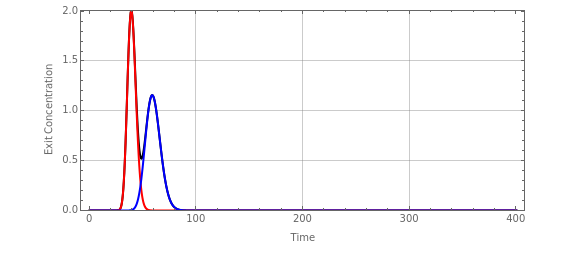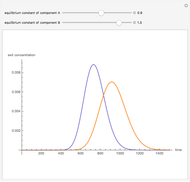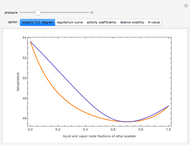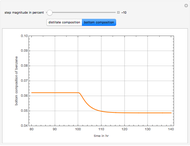Liquid Chromatography Simulation

Requires a Wolfram Notebook System
Interact on desktop, mobile and cloud with the free Wolfram Player or other Wolfram Language products.
This Demonstration expands on the Demonstration "Liquid Chromatography with Linear Adsorption Equilibrium and Plate Model". Using a discrete plate representation of the chromatographic column, it includes both linear (partition) and nonlinear (noncompetitive Langmuir adsorption) models. The column throughput rate is accounted for by the addition of a first-order exponential modification of the basic models. Frontal analysis as well as preparative chromatography can also be simulated.
Contributed by: Nicholas Lordi (March 2011)
Open content licensed under CC BY-NC-SA
Snapshots
Details
The chromatographic column is modeled as a first-in, last-out shift register in which each element of the register is a "plate". Exchange processes between the mobile and stationary phases are independently calculated in each plate during a shift cycle. The column dimensions are fixed but undefined. Component amounts are arbitrary. Time units are equivalent to plate residence times, determined by the number of plates and transit time. You have the option of altering the time scale, but the  axis is automatically adjusted to the maximum exit concentration.
axis is automatically adjusted to the maximum exit concentration.
Snapshot 1: adsorption model normal plot
Snapshot 2: partition model cumulative output plot
Snapshot 3: potential for mass separation with input width much greater than 1
Snapshot 4: component 2 exponentially modified partition model
 = initial component amount/plate entering column
= initial component amount/plate entering column  ,
, 
 = equilibrium constant
= equilibrium constant  ratio of effective mobile to stationary phase volumes = Langmuir equilibrium constant / effective mobile phase volume
ratio of effective mobile to stationary phase volumes = Langmuir equilibrium constant / effective mobile phase volume
 = adsorption component saturation level/plate
= adsorption component saturation level/plate
 = first order exponential modification constant
= first order exponential modification constant
For more information, see: T. W. Shattuck, "HPL Simulator".
Permanent Citation

















